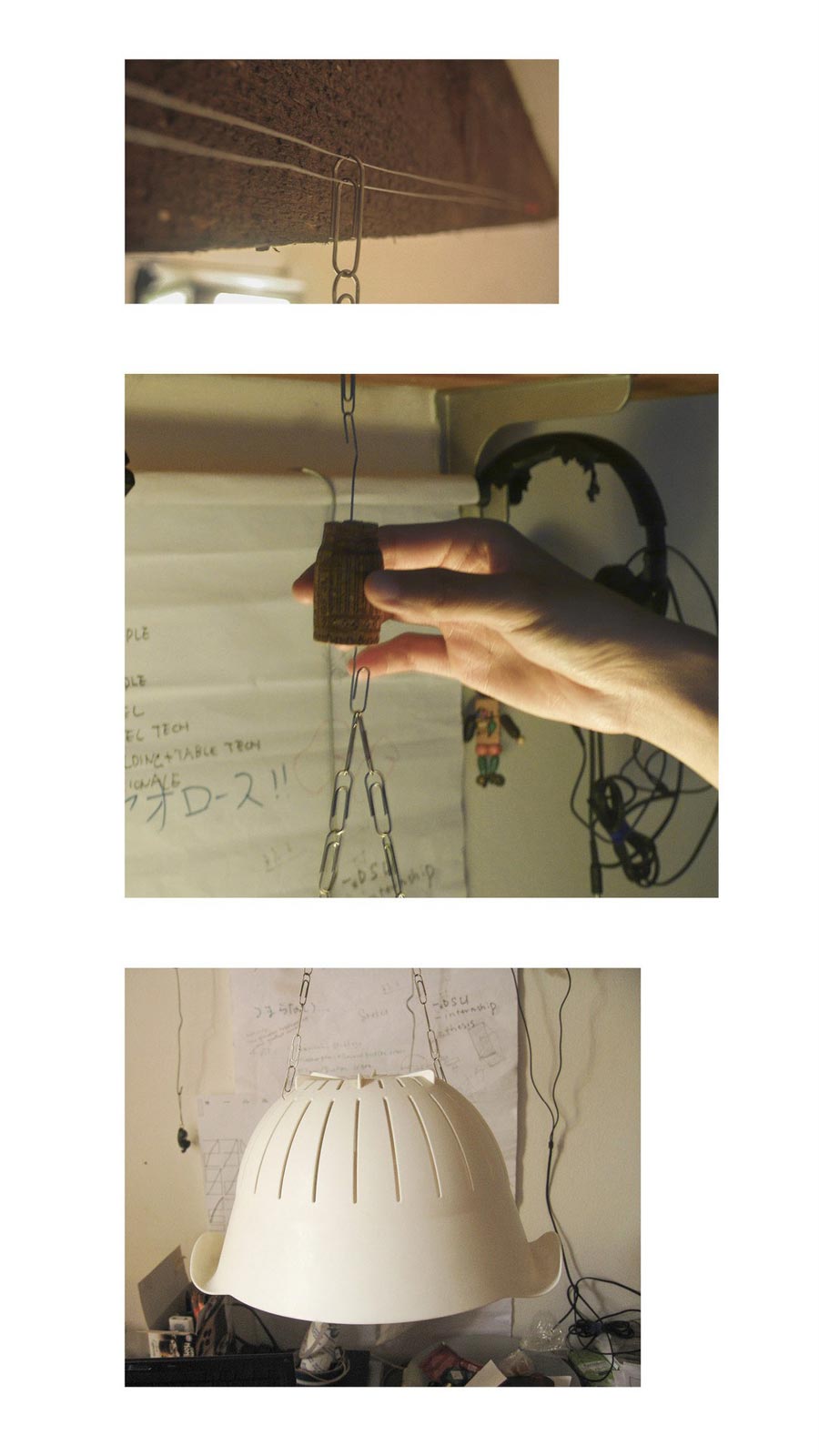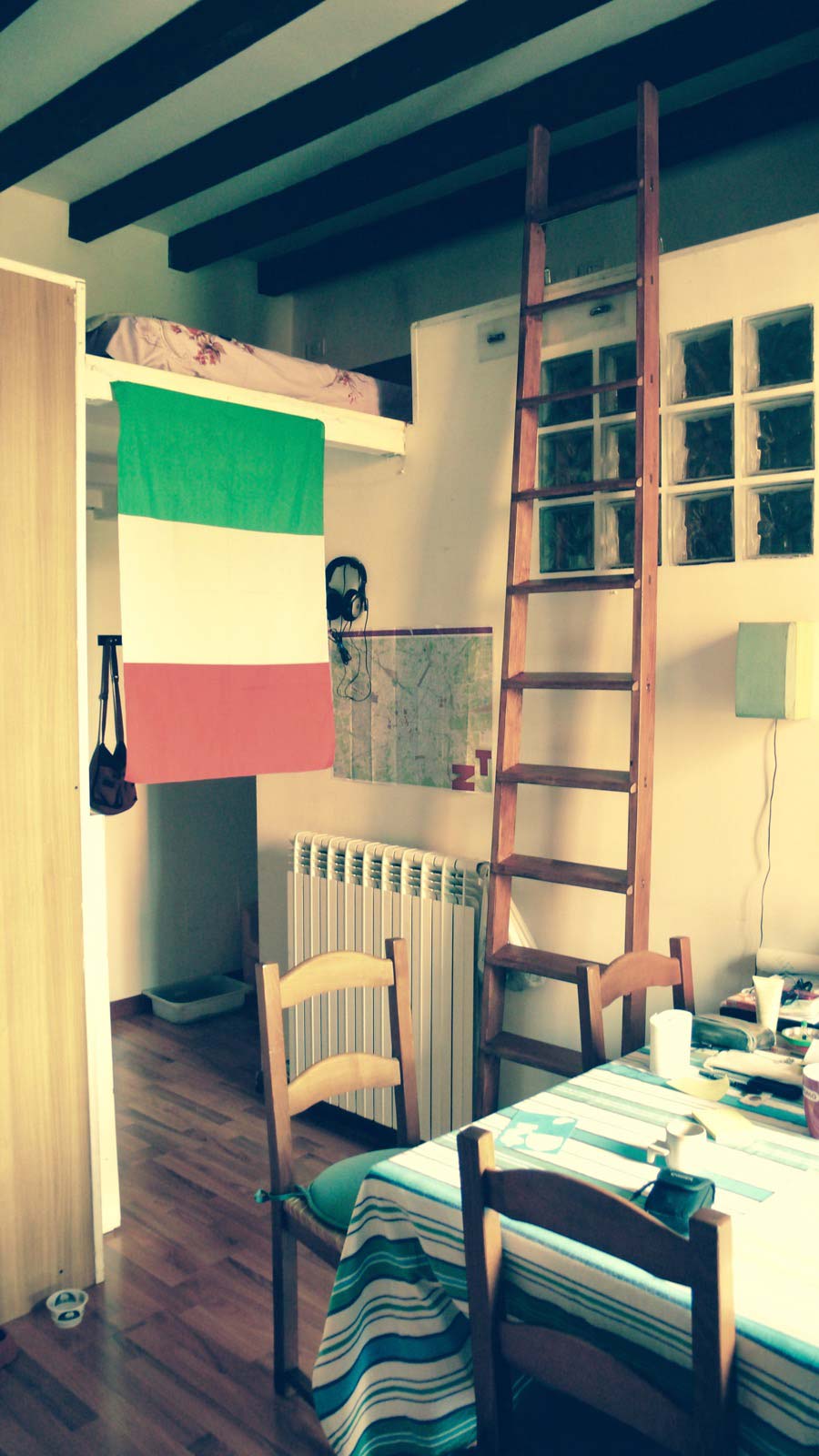
The second house we lived in Milan was a super tiny one, about just 20 m². Small as it was, everything had to go vertical: Washing machine on top of fridge; bed on top of a slab across bathroom and wardrobe, connected with the living room with a moveable wooden ladder; orange tile on top of bathroom, indicating you could sit there eating watermelon in summer; of course, you could lie or sit or put things on top of the wardrobe too.
Although it was so small, it had almost everything to support our life: except the fridge and the washing machine we talked before, there were a tiny balcony, a ceiling fan, an oven, a shower room, a bidet, and so on. We loved it.
It only lacked of a lamp.
There was a ceiling light mounted on the fan, but it didn’t work. When it was lit, the whole interior was (darkly) lit, which enhances the tininess of the space. As a home, we felt it should be more intimate and warm. Lighting had to go lower. We got to get a new lamp.
Here is the result: A lampstand from IKEA, classic and cheap (you may have one too); lampshade from IKEA too — FLÄCKIG white plastic colander, hanged by a string of paper clip connecting to a sliding system made with steel wire and push pins mounted on the old house’s wooden beam.
It absolutely improved our life.

We used it for two years from moved in till leaving Milan. We named it Lamp A.
Why it looks like this? Here’s the story.
As talked above, we were in need of a lower lamp. Of course we went to IKEA without thinking. By looking around in IKEA, we got a lampstand with bargain price but didn’t find a good lampshade since they were all surprisingly expensive.
So we wanted to make a lampshade.
Soon, we got several ideas, tried and failed, either too weak the structure—you know we have a cat—or too dim the light. After dozens of failure, all of sudden, we both fixed our eyes on our colander, also from IKEA, bought together with the lampstand.
Look, the colander has the same shape as a shade. The material is translucent. Evenly distributed slots for draining can surely let light go through as well.
It proved to be a good try. The light was gentle but bright enough.
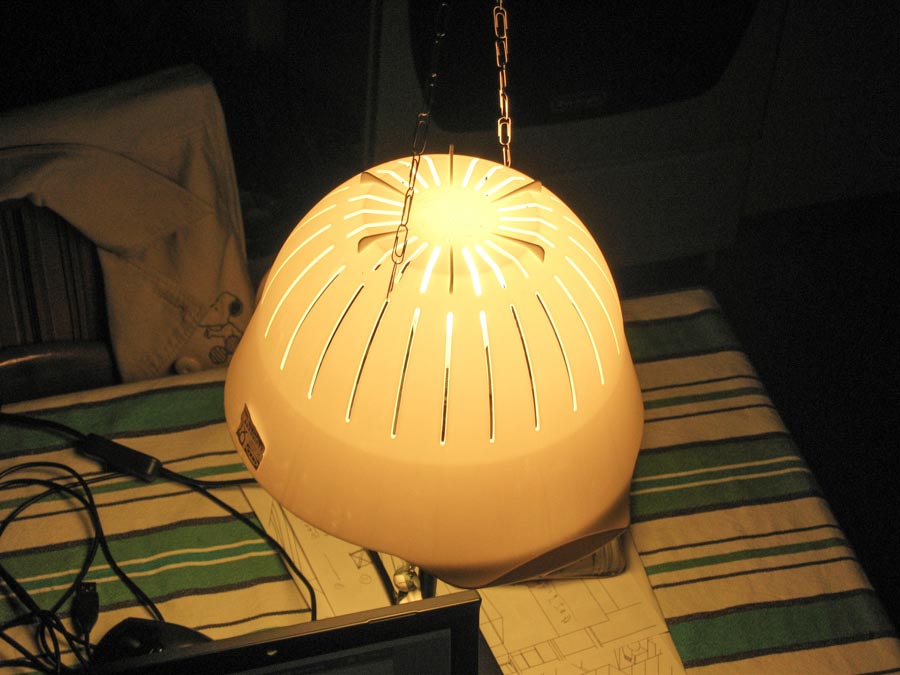
Moreover, the time of using colander to cook and to shade the light normally doesn’t overlap. We don’t use colander to drain things for long, and not every meal needs it. For the period of being left there doing nothing (the most popular activity in colander world), colander can be absolutely used as a lampshade.
The table we got in that tiny apartment was inpproptionally big. It occupied the central space of the interior, having stove and sink on one side, wardrobe and bookshelf on the other side. It meant to host different activities, if not all. Primarily, preparing food and working would take place on each sides of its long edge.
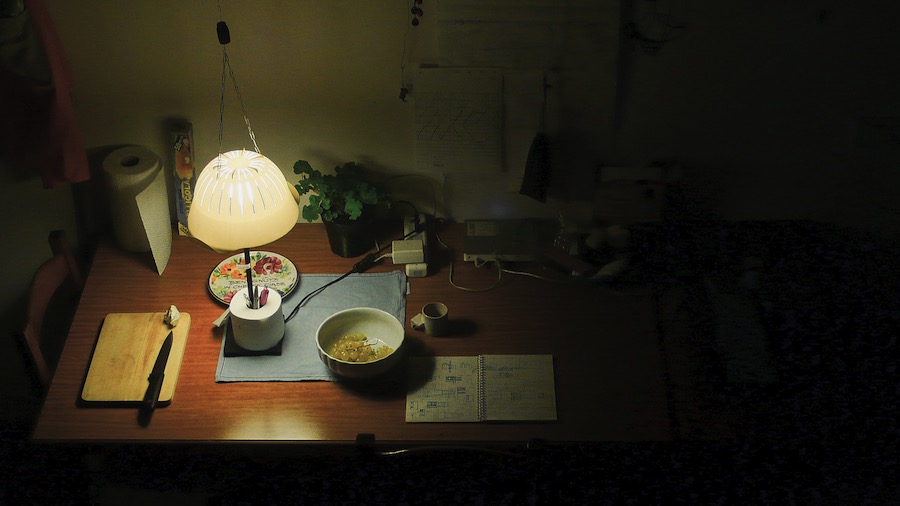
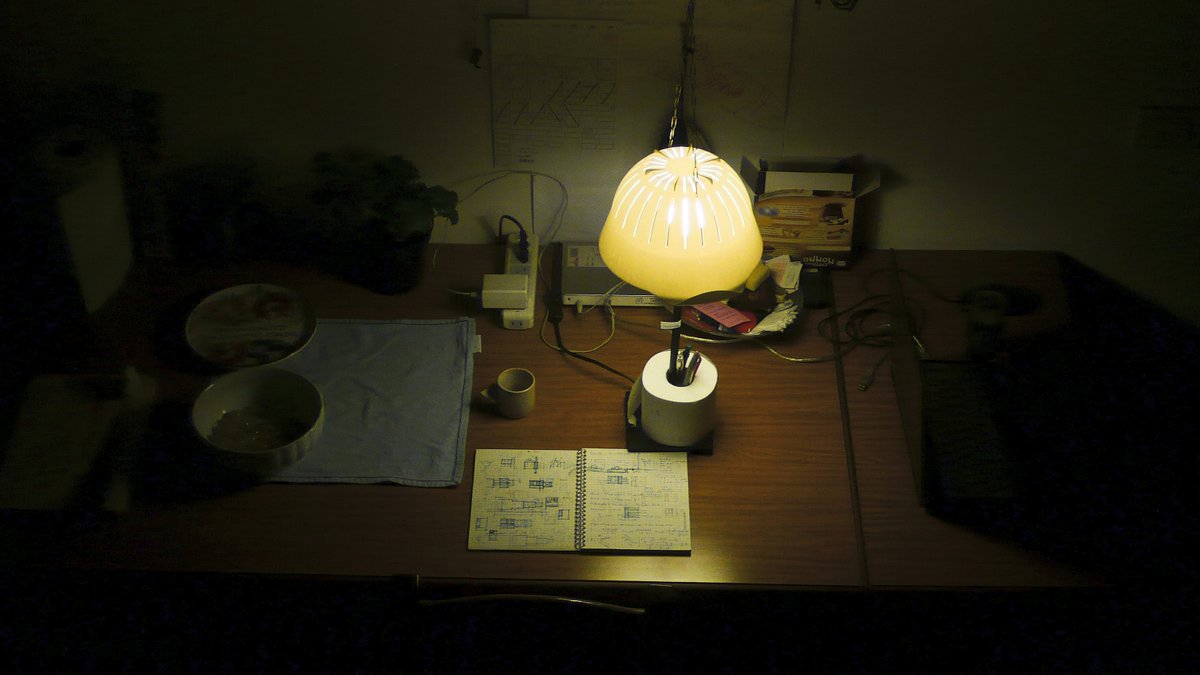
Light played an important role in both cutting and writing. Therefore, we had to make a movable lamp. We improvised a sliding track. The track was made of steel wire, which was straightened by two pushpins. The pushpins were fixed on a wooden beam. Thank goodness we got wooden beams (easy to work with) and they were placed evenly across the whole space.

Having a shade and a track in hand, we had to work out a way to connect them.
Looking at the wooden beams on the ceiling, we thought it could be hanged with something like a rope. Slots are ideal hooking points because they are symmetrical. We could hang it perfectly flat.
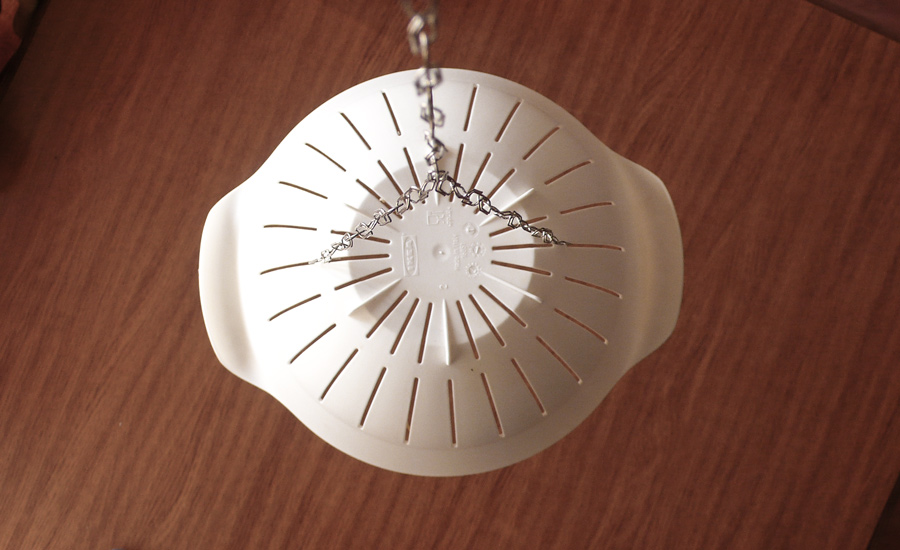
We used paper clips for our hanging system. Why paper clips? First of all, we had thousands of them. We had brought them from China for making model in POLIMI, following the fashion that students studying overseas prepare as many as possible stationeries to avoid spending more money on buying the exactly same thing there (yes that was stupid). So by using the clips, a stupid action is justified, we were happy. Secondly and most importantly, clips can be connected with one another so can be easily forming a chain, and the chain got a lot of anchor points. This enables the lampshade to move vertically, so it doesn’t block the way when we move the lampstand.

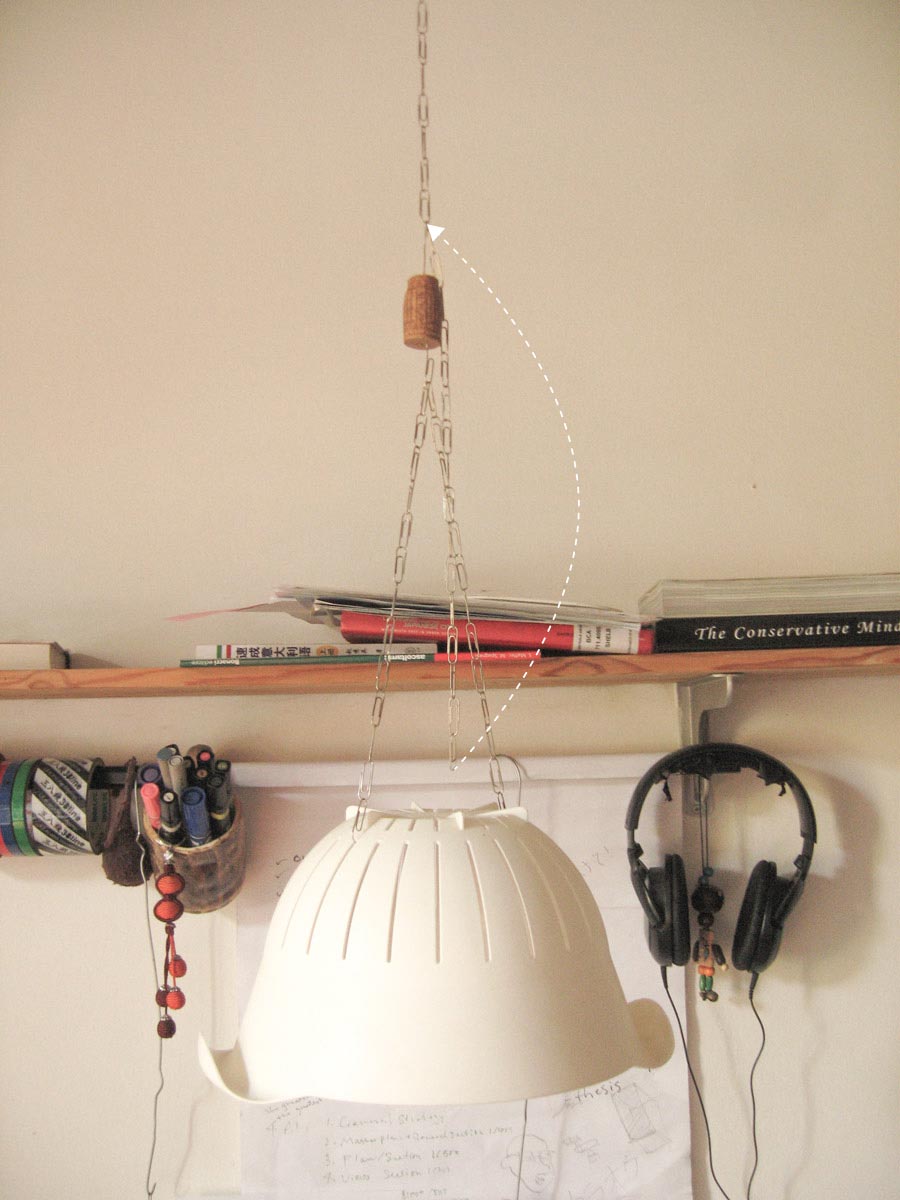
In addition, we made the moving process more pleasant by adding a hand-friendly cork.
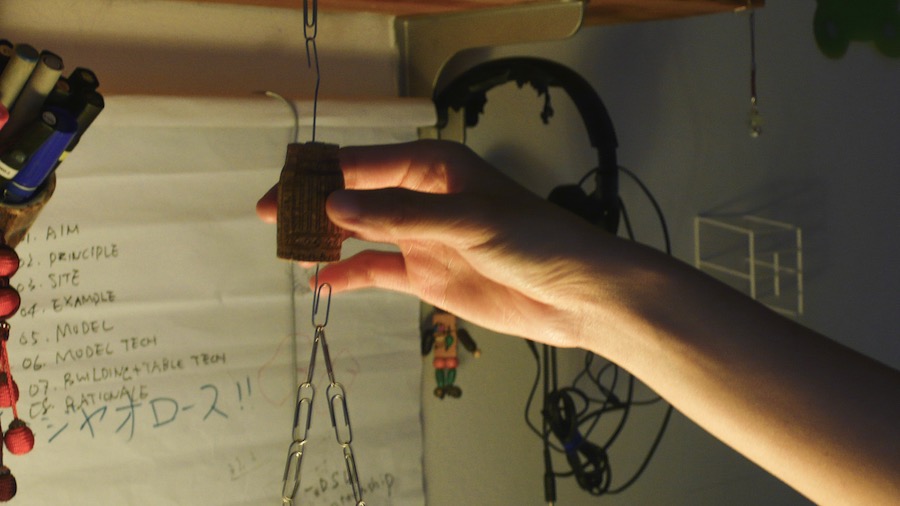
Lucky enough, the sliding system worked perfectly with clips too. See below:
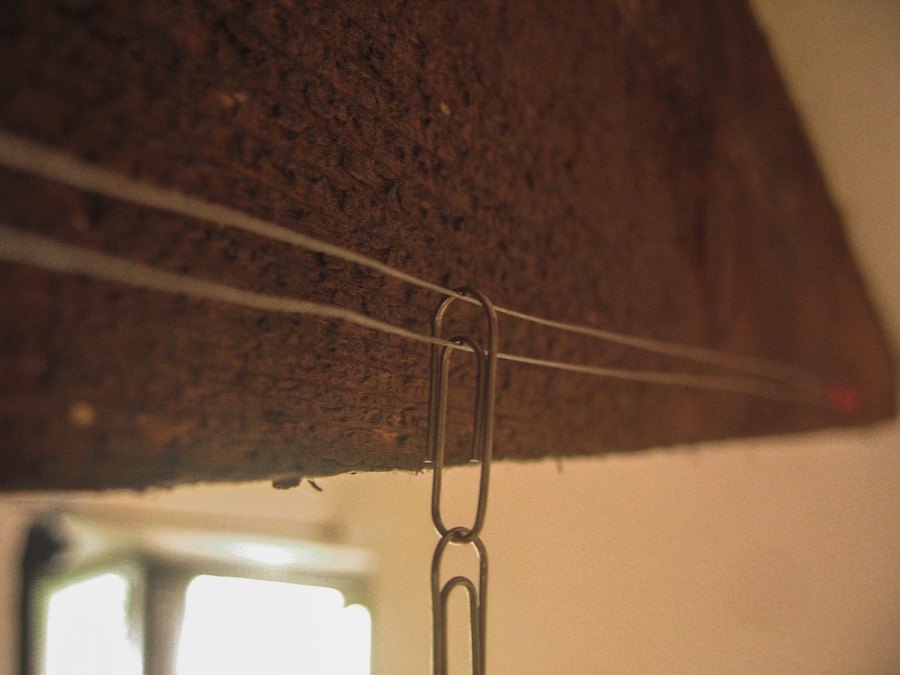
Lastly, we could achieve all these comfortably by our bare hands, making the whole project so workable as we didn’t have any other tools at that moment.
Lamp A might look strange but every single detail had a reason.
It works.

